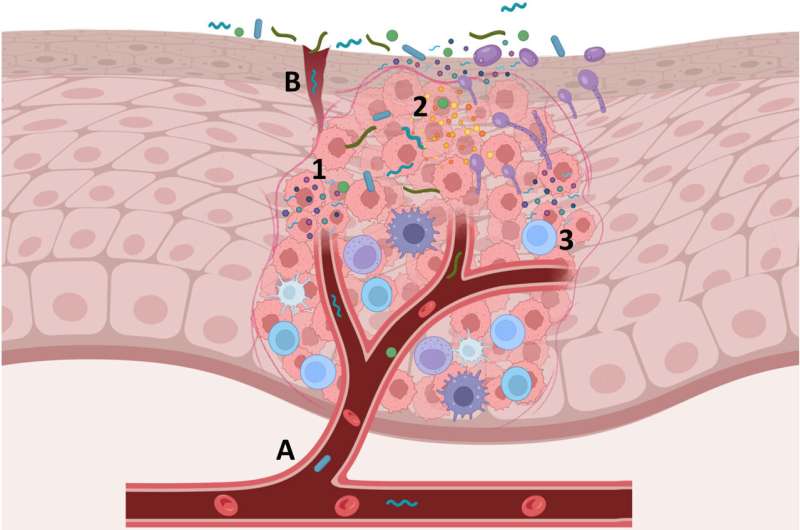This article has been reviewed according to Science X's editorial process and policies. Editors have highlighted the following attributes while ensuring the content's credibility:
fact-checked
trusted source
proofread
Oral microbiome and cancer: A closer look into the intricate interplays of the mouth's hidden world

The human mouth is a bustling ecosystem teeming with microscopic life. While we often associate oral health with brushing, flossing, and regular dental check-ups, there's more to the story.
A recent review article published in Periodontology 2000 by researchers at Karolinska Institutet, collaborating with researchers in South Korea, Sri Lanka and Australia, delves into the intricate world of oral microbes and their potential impact on oral pathologies, including cancer development.
Georgios Belibasakis, Professor of Clinical Oral Infection Biology and Head of the Division of Oral Health and Periodontology at the Department of Dental Medicine, and his team discuss the oral bacteriome and mycobiome —the communities of bacteria and fungi— among oral mucosal pathologies and across different stages of oral carcinogenesis. The review sheds light on the hidden players within our mouths and their association with the occurrence and progression of disease.
The studies discussed in the review have analyzed samples from saliva, dental plaque (biofilm), and oral mucosal tissue in various oral pathologies and at various stages of oral cancer development. Here are the key takeaways:
Cutting-edge technology metagenomic and metaproteomic platforms allow us to decipher the composition of the microbial occupants of the mouth, shedding light to their presence and roles in disease. In the case of oral squamous cell carcinoma (OSCC) certain bacterial or fungal species stood out.
Prevotella intermedia, Porphyromonas endodontalis, Acremonium exuviarum, and Aspergillus fumigatus were enriched, whereas, conversely, Streptococcus salivarius, Scapharca broughtonii, Mortierella echinula, and Morchella septimelata were depleted in this pathology.
The microbial dysbiosis associated with OSCC was most pronounced in mucosal samples, rather than in biofilm or saliva samples. This highlights the importance of considering the spatial microbiome as well as the vicious circle of the interplay between bacteria and fungi, when studying oral carcinogenesis.
Professor Belibasakis said, "Variations in the 'core microbiome' of an individual may serve as predictive markers for any oral condition, including carcinogenesis. The available data enhances our understanding of the ecology of oral niches and their 'dysbiotic' changes during oral mucosal dysplasia and oral cancer.
"This knowledge could support early diagnostic and prognostic tools as well as innovative treatments, making a quantum leap in oral medicine."
In the battle against oral cancer, understanding the intricate dance of bacteria and fungi within our mouths may prove to be a key ally to better prevention and management.
More information: Georgios N. Belibasakis et al, Bacteriome and mycobiome dysbiosis in oral mucosal dysplasia and oral cancer, Periodontology 2000 (2024). DOI: 10.1111/prd.12558





















